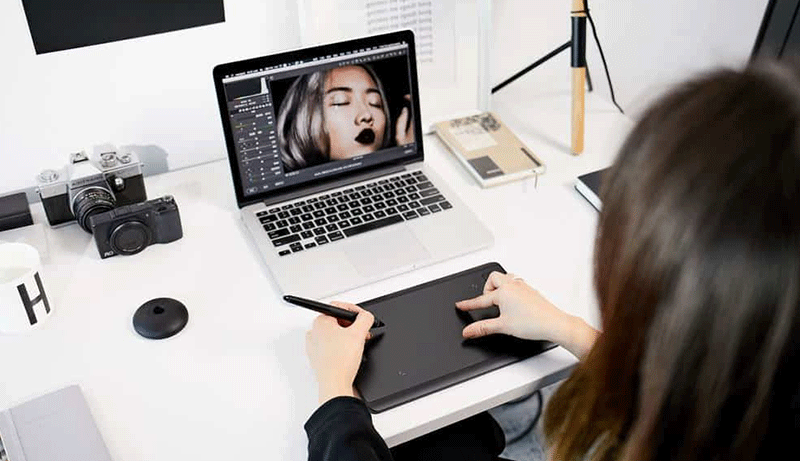Exploring the world of professional photography camera options is both exciting and, at times, overwhelming, especially for seasoned photographers. The prospect of investing a significant amount of money can instill a sense of apprehension. Regardless of expertise, finding a camera that aligns with individual standards remains a critical aspect.
Navigating the process of acquiring a new camera involves extensive research, and we’ve undertaken that task for you. Our compilation narrows down the top cameras for professional photography, providing a comprehensive guide to help you discover the perfect fit for your requirements.
Leading our recommendations is the Nikon Z9, renowned for its robust performance, exceptional autofocus capabilities, and access to some of the finest lens options globally. Our list encompasses a diverse range of camera brands, presented in no specific order, including the best full-frame mirrorless cameras, DSLRs, and others with varied sensor types.
This curated selection aims to alleviate the challenges associated with choosing the ideal professional photography camera, ensuring that photographers, regardless of their level of experience, can confidently explore and identify the camera that best suits their unique needs and preferences.
1. Nikon Z 9

Nikon’s latest flagship professional camera, the Z9, stands as a game-changer, surpassing its competitors with groundbreaking features and unparalleled image quality. In a market where Nikon has faced stiff competition from industry giants Sony and Canon in the mirrorless domain, the Z9’s arrival has taken many by surprise.
The Z9’s standout feature lies in its remarkable frame rate, challenging conventional norms. While 24 fps was once deemed impressive, the Z9 astounds with an astonishing 120 fps in still photos. Nikon has raised the bar by incorporating a deep-learning algorithm into its autofocus system, capable of seamlessly tracking subjects ranging from people and animals to fast-moving vehicles. The integration of 3D tracking and subject detection ensures precision in capturing dynamic scenes.
Notably, the Z9 excels as a professional video camera, boasting a maximum video resolution of 8K. What sets it apart is its ability to shoot 12-bit RAW footage in-camera without overheating, delivering exceptionally crisp footage that allows for the extraction of 33 MP still frames.
While the Z9 leans towards the bulkier side, weighing 2.9 lbs (1.3 kg) for the body alone, its robust build and weather sealing establish it as a formidable professional camera, capable of withstanding challenging environmental conditions. In essence, the Nikon Z9 emerges as a trailblazer, redefining the possibilities within the professional camera landscape.
2. Canon EOS R3

Canon has long been a favorite among photojournalists, wildlife, and sports photographers, known for delivering performance even in high-stress environments. The Canon EOS R3 mirrorless camera upholds this legacy while introducing new features that enhance the speed and intuitiveness of photo capture.
A standout feature of the EOS R3 is its remarkable 1,053 autofocus points, adept at accurately detecting a diverse range of subjects, from humans to animals. The addition of Eye Control AF, a technology dating back to 1998 in high-end film cameras, marks its debut in a digital camera. This hands-free and intuitive focusing mechanism follows eye movements, streamlining the photographic process.
Further enhancing its capabilities, the Canon EOS R3 incorporates five-axis in-body image stabilization (IBIS), ensuring camera steadiness during low shutter speed shots. This feature proves invaluable for professionals working in challenging lighting conditions, such as photojournalists or event photographers.
In terms of continuous shooting, the EOS R3 impresses with 12 fps using a mechanical shutter and up to 30 fps electronically. In custom mode, it can fire an astonishing 195 frames, surpassing competitors like Nikon’s Z9.
The EOS R3 excels as a hybrid camera, capable of shooting 60 fps in 6K and 120 fps in 4K video. Notably, its suppressed rolling shutter distortion minimizes the “Jell-O effect” often associated with fast movements in mirrorless cameras.
While the EOS R3 features a 24 MP sensor, trailing behind some competitors in resolution, its exceptional capabilities and performance place it at the forefront of professional camera options. Canon’s EOS R3 stands as a testament to innovation, offering a robust solution for photographers demanding speed, precision, and versatility.
3. Nikon D780

In the midst of competitors launching new mirrorless cameras in 2020, Nikon took a different route with the introduction of the Nikon D780, a full-frame DSLR camera that defies expectations. While on the surface it may appear as a standard entry-level DSLR with a 24 MP sensor, delving deeper reveals its significance in the camera landscape.
Succeeding the much-admired Nikon D750 from 2014, the D780 distinguishes itself as a hybrid camera, notably improving autofocus for video—a notable challenge in many DSLRs. The common struggle with autofocus during video shoots, characterized by hunting for subjects and jerky transitions between focus points, is effectively addressed, allowing for precise and smooth focusing akin to mirrorless counterparts. Importantly, it maintains compatibility with existing DSLR lenses.
Beyond its enhanced video capabilities, the D780 incorporates various features catering to modern professional photographers. Creative filters, including a tilt-shift lens effect, elevate its photography capabilities. The camera facilitates in-camera combinations of multiple exposures and enables the creation of focus-stacking shots, ensuring sharpness from background to foreground.
The Nikon D780 finds its niche among professional photographers and dedicated enthusiasts who cherish the DSLR experience but desire the advanced autofocus capabilities found in mirrorless options. While it may seem unassuming at first glance, the D780 stands as a testament to the enduring value of DSLR cameras, showcasing that innovation and practicality can coexist seamlessly.
4. Canon EOS 5D Mark IV

The Canon EOS 5D Mark IV, introduced in 2016, stands as the latest evolution in the esteemed 5D lineup, perpetuating the legacy of its predecessors with enhanced features. Despite the changing landscape of camera technology, the 5D Mark IV remains a favored choice among professional photographers.
Regarded as one of the best in its heyday, the EOS 5D line, including the original 5D, continues to be sought after for its ability to produce film-like images. The 5D Mark II earned acclaim, particularly for its exceptional video performance, making it a preferred tool among indie filmmakers.
The appeal of the 5D Mark IV lies in its compatibility with older Canon lenses, offering a seamless transition for existing Canon users. Its optical viewfinder ensures a flicker-free and lag-free shooting experience, preserving the traditional DSLR feel.
With a 30 MP sensor and an ISO sensitivity ranging from 100 to 32,000 (expandable to 50-104,200), the 5D Mark IV remains competitive in resolution. It supports 4K video recording up to 30 fps with a 1.74x crop, and for Full HD video, the frame rate can be increased to 60 fps. In super slow-motion, the camera excels at 720p, capturing up to 120 fps.
While Canon has ceased DSLR development, marking the end of an era, the 5D Mark IV stands as one of the last opportunities to acquire a remarkable DSLR. Beyond sentimentality, the camera’s specifications underscore its capability to meet the diverse needs of professional photographers, making it a reliable and powerful choice in the evolving landscape of imaging technology.
5. Sony Alpha 7R IV

If the Sony a1’s price tag seems prohibitive, fear not, as a competitive alternative awaits in the form of the Sony a7R IV. Beyond being significantly more affordable, it boasts an impressive 61 MP resolution, positioning it as one of the highest-resolution cameras in the realm of full-frame mirrorless options.
Similar to the a1, the a7R IV features Pixel Shift Multi-Shooting, a remarkable capability that merges 16 RAW files to create a single, expansive image exceeding 200 MP. This proves invaluable for those who relish producing large prints from their photographs, showcasing the incredible image quality derived from Pixel Shift functionality.
While the a7R IV achieves 10 fps compared to the a1’s 30 fps, the former is more than adequate for capturing crucial moments in most shooting situations. Boasting 567 autofocus points utilizing phase detection, the camera ensures precise focusing, even when capturing fast-moving subjects.
While lacking 8K capability, the a7R IV excels in 4K, allowing for recording at 24, 25, and 30 fps. Additionally, at Full HD (1920 x 1080), it supports slow-motion capture at up to 120 fps.
For those who don’t require the specialized features of the Sony a1, the a7R IV proves to be a solid investment. The exceptional image quality stemming from its 61 MP sensor makes a noticeable difference, particularly for enthusiasts who revel in capturing intricate details in their photos.
Conclusion
For professional photography, the Nikon Z9 stands out as our top recommendation due to its exceptional performance in both photography and videography.
Boasting a comprehensive set of features, the Z9 proves to be a versatile choice suitable for a wide range of professionals, including sports and portrait photographers.





Leave a Reply